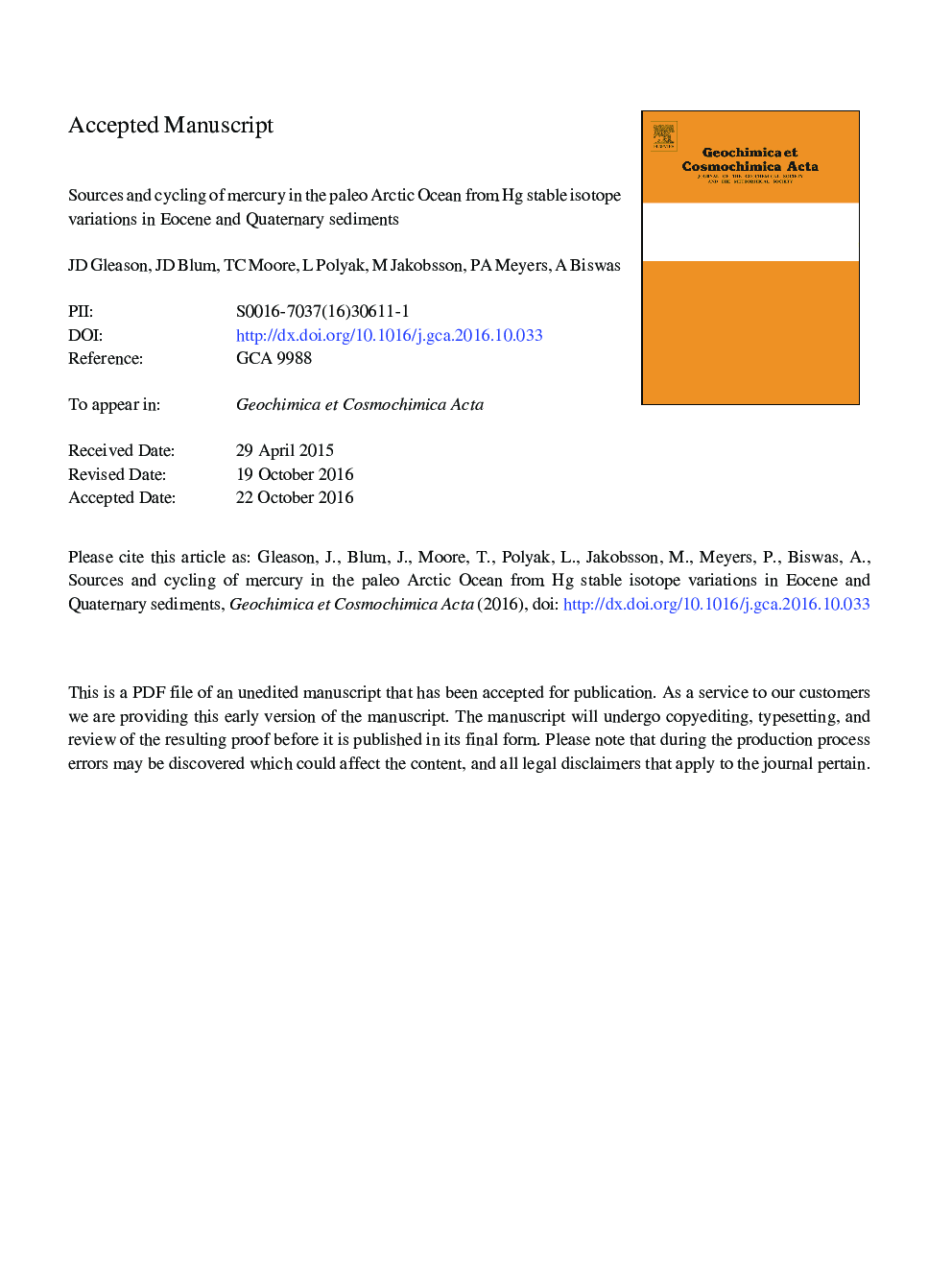| Article ID | Journal | Published Year | Pages | File Type |
|---|---|---|---|---|
| 8911047 | Geochimica et Cosmochimica Acta | 2017 | 52 Pages |
Abstract
Mercury stable isotopic compositions were determined for marine sediments from eight locations in the Arctic Ocean Basin. Mass dependent fractionation (MDF) and mass independent fractionation (MIF) of Hg stable isotopes were recorded across a variety of depositional environments, water depths, and stratigraphic ages. δ202Hg (MDF) ranges from â2.34â° to â0.78â°; Î199Hg (MIF) from â0.18â° to +0.12â°; and Î201Hg (MIF) from â0.29â° to +0.05â° for the complete data set (n = 33). Holocene sediments from the Chukchi Sea and Morris Jesup Rise record the most negative Î199Hg values, while Pleistocene sediments from the Central Arctic Ocean record the most positive Î199Hg values. The most negative δ202Hg values are recorded in Pleistocene sediments. Eocene sediments (Lomonosov Ridge) show some overlap in their Hg isotopic compositions with Quaternary sediments, with a sample of the Arctic Ocean PETM (56 Ma) most closely matching the average Hg isotopic composition of Holocene Arctic marine sediments. Collectively, these data support a terrestrially-dominated Hg source input for Arctic Ocean sediment through time, although other sources, as well as influences of sea ice, atmospheric mercury depletion events (AMDEs), and anthropogenic Hg (in core top samples) on Hg isotopic signatures must also be considered.
Related Topics
Physical Sciences and Engineering
Earth and Planetary Sciences
Geochemistry and Petrology
Authors
J.D. Gleason, J.D. Blum, T.C. Moore, L. Polyak, M. Jakobsson, P.A. Meyers, A. Biswas,
